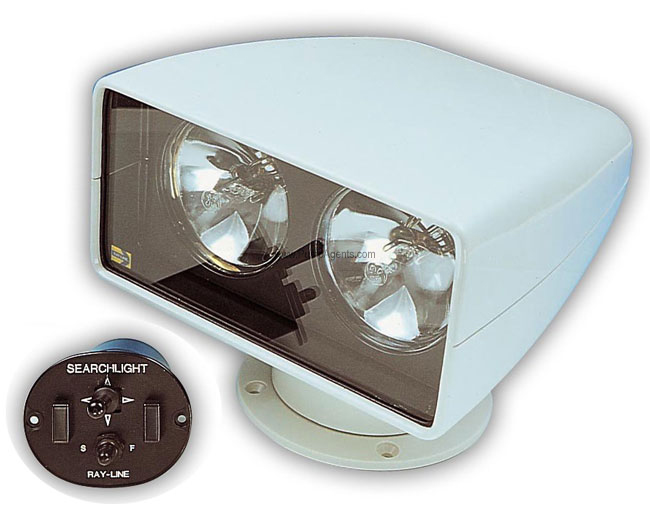Jabsco # 60010-2024 Series 255SL Remote Control Searchlight

Jabsco # 60010-2024
Jabsco catalog # 60010-2024, Series 255SL Remote Control Searchlight. Searchlight is 24 Volt DC.
Price : $ 0.00
Product Information :
The Jabsco 60010-2024 is a 24 Volt DC Series 255SL Remote Control Searchlight. This is a stylish, dual bulb searchlight for medium to larger yachts, remotely controlled from helm station. The advantage of the remote control is that it allows you to direct the light in the best location for maximum effectiveness. They are an increasingly popular addition on power boats, helping locate buoys, moorings and channel markers. Control is by joystick or touchpad. Secondary remote control kits can be bought for most models, which allow control from either the flybridge or main helm.
Features :
Product Specs :
Easily replaceable halogen sealed beams deliver 200,000 candlepower.
High-tech design and styling for power boats.
Supplied complete with water resistant joystick remote control.
Full 360 degrees horizontal rotation, 60 degrees vertical sweep.
Optional secondary full control panel for dual helm stations.
Tough, weatherproof and corrosion-resistant design.
Complete with 25' cable, with optional extension cables.
Parts and Accessories for Jabsco model 60010-2024
Applications
Ideal for larger boats..locate buoys, moorings, channel markers, etc. Ideal for larger motorhomes and bus conversions..pinpoint road signs, campsites, or use as backup light. A marine searchlight has to be capable of performing a range of tasks from locating buoys to illuminating a narrow channel and, occasionally, searching for a man overboard. Therefore, it needs to be designed to offer the best combination of beam spread and intensity for both shorter and longer range work. Typically, our spot beams have a 7 degrees beam spread as opposed to 40 degrees on a flood beam and will consequently reach at least 3 times further. We quote performance of our searchlight range in two ways candlepower and lux. Candlepower is a useful guide to actual light produced, but does not measure the efficiency of reflector design to project that light at the target. The most relevant comparison guide is lux, which is the measurement of actual light available at a given distance. In order to be able to distinguish a reasonable level of detail, a level of one lux is generally considered to be necessary.